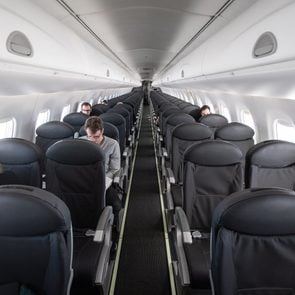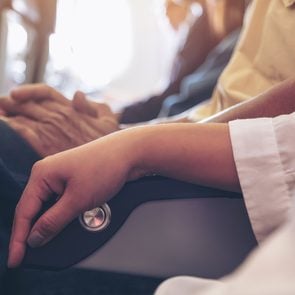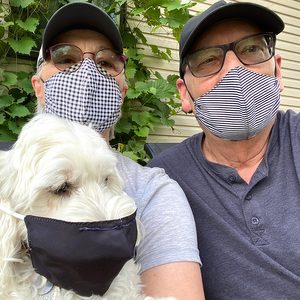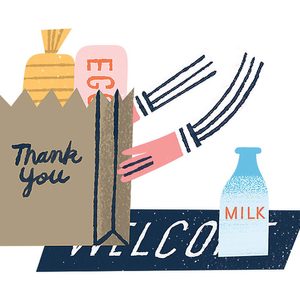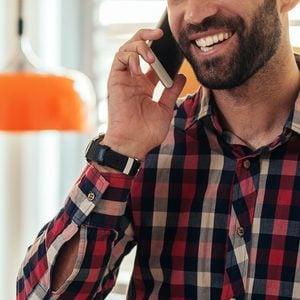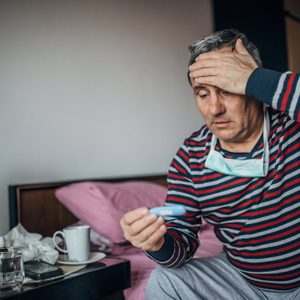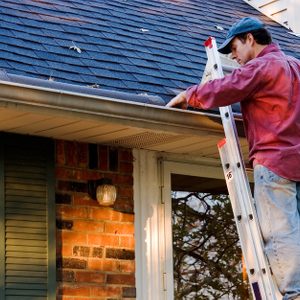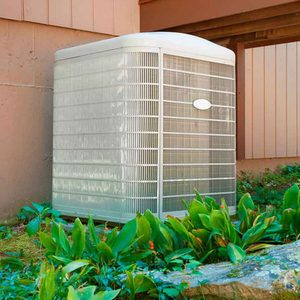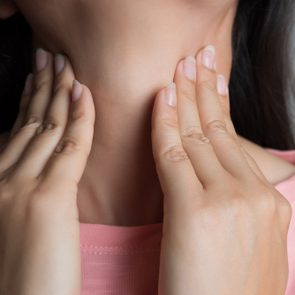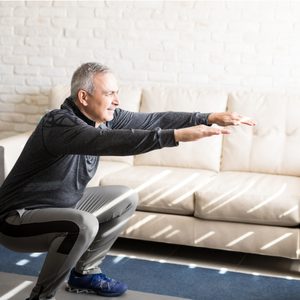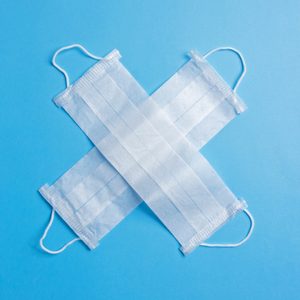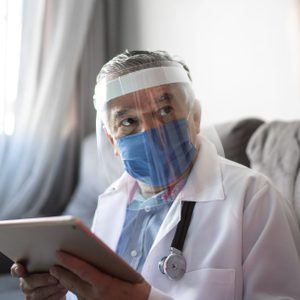On a day by day basis, there are about 70 percent fewer passengers traveling through airport security lines than there were at the same time last year. But how does that affect you, as a traveler?
Labour costs may be cut by 50 percent
Due to the travel collapse, airlines will need to cut payroll costs by 30 to 50 percent, the equivalent of tens of thousands of jobs. United Airlines says that about 36,000 employees could be furloughed, while American Airlines says it plans to lay off or involuntarily furlough 19,000 unless they receive more aid.
Travel after COVID-19 will be different—here’s how.
Some airlines may fold
Smaller international airlines, including Virgin Australia and Columbia’s Avianca, have already folded. Others may soon follow suit, depending on how long the industry is in crisis. The International Air Transportation Association predicts that global travel won’t recover until 2024, due to a lack of consumer confidence, continuing global COVID-19 outbreaks, and disruption of business travel, CNN says. This has a major effect on the survival of the airlines: It’s expected that international passenger traffic will fall by 55 percent in 2020 from the 2019 numbers.
Change fees will be eliminated
Here’s some good news for passengers: Some airlines—in a desperate attempt to lure leery passengers—will continue to eliminate those pesky change fees. “The reason they’re making these changes is to increase consumer confidence in booking flights,” Henry Harteveldt, a travel industry analyst and president of travel market research firm Atmosphere Research, told Afar. “The airlines know that consumers are scared to book flights because of the public health landscape.” If passengers book flights in advance—even if they end up changing these flights—the airlines can better predict where people want to fly, and they can have a better sense of planning. This also puts these airlines on the same playing field as Southwest, which has long been revered for its lack of change fees.
Check out these 15 panoramic webcams that let you virtually travel the world.
Prices may drop
Another plus for passengers? Possibly. Experts are conflicted, but most agree that the price of plane tickets won’t go up at least in the short term, despite the industry’s troubles. The airlines are in a very tricky situation: They’re actively losing money, they don’t have any idea when the downturn will end—and yet, they still need to lure passengers, so they can’t raise rates. Once passengers do return, you can expect higher prices for airline tickets than before the pandemic as airlines struggle to make up for their losses.
It’s a good idea to book 2021 travel stat
No one knows what the future will hold, but what we do know is that the booking policies are super flexible. Most airlines, hotels, and cruises will return your money without any fees—especially if you have a COVID-related cancelation. If they don’t give you a full refund, the travel companies are offering credits for a no-fee 24-month travel change, so you’re pretty much good to go. If you’re really worried, you can purchase trip insurance. The benefits to booking now are that you will have more options for using your miles if you’re booking award travel; there are tons of deals available; and if you see a great price for a dream trip, there’s really no reason not to book now and see what happens next.
These are the eight things you won’t be able to do on airplanes anymore.
Flight attendants will be hardest hit
The position accounts for more jobs than any other in the airline industry—so they will be affected the most by the layoffs, Savanthi Syth, an airline analyst for Raymond James, told ABC News. Since carriers have shrunk, meeting the demand for fewer passengers, there are fewer employees needed. Plus, food and drink service on most flights has been cut, so the flight attendants aren’t as critical.
Airlines are transporting items rather than people
Desperate for revenue, some airlines are filling up the planes with everything from strawberries to medication in an effort to make some money as they fly. Since COVID-19, cargo rates rose more than 10 percent, as the airlines let it be known that they have ample extra room to ship cargo. That’s because passenger traffic is down by 90 percent. It’s not a totally fair tradeoff, though. The airlines could lose $252 billion in passenger revenue, according to the International Air Transport Association.
This is the truth about recirculated air on airplanes.
Though passengers are scared, it’s safe to fly
The Flight Safety Foundation, a global advocate for aviation safety, announced in October that a six-month analysis of the air travel industry’s response to the virus concluded that the industry’s efforts have reduced the possibility of transmission in the air. “With the health and safety measures that airlines, airports, and security personnel have now put in place, the risk of contracting this virus appears extraordinarily low, much lower than in other public places,” says Hassan Shahidi, president and CEO of the foundation.
Sources:
- TSA.gov: TSA checkpoint travel numbers for 2020 and 2019
- CNN: “The airline industry could shrink by half to survive, United Airlines chairman says”
- CNN: “Global air travel won’t recover till 2024, says airline body”
- Afar: “The Major U.S. Airlines Have All Ditched Their Change Fees—for Good”
- OAG: “US Majors Heading for a Thanksgiving Roasting”
- ABC News: “Unfriendly skies: Airline workers brace for mass layoffs”
- Flight Safety Foundation: “Flight Safety Foundation: ‘It’s Safe to Fly'”
Next, here are 11 things you won’t be able to do on cruises anymore.
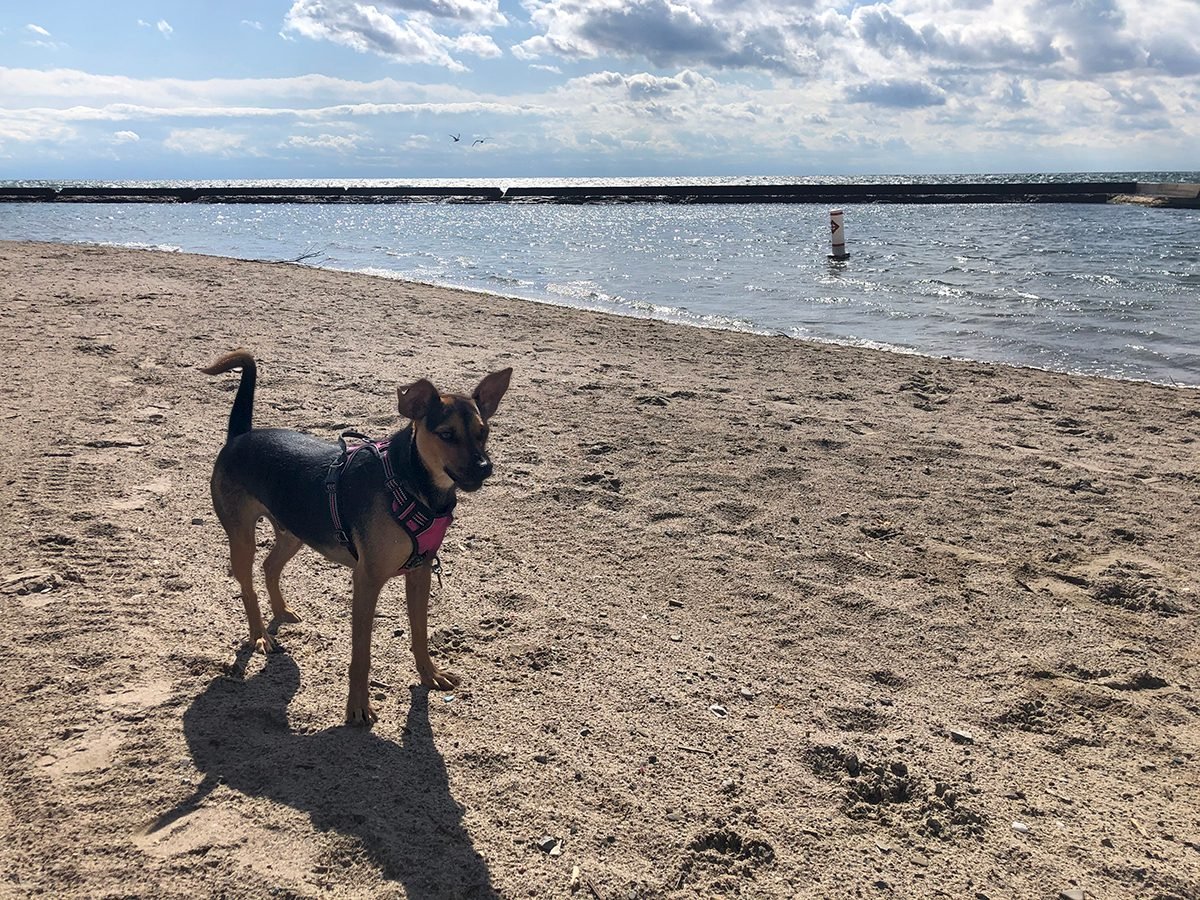
My Pandemic Puppy
The same week that the first lockdown was announced last March, The UDR Canada, a canine rescue agency, approved my family to adopt a seven month old puppy that was being fostered in Waterloo, Ont.
My wife, Bryony, and I had been looking for a while. We’d decided to not have a second child, but we still wanted to grow the family. Our five-year-old son, Louis, was fully on board, of course—and we thought caring for an animal would be good for him.
But then the world changed.
“Should we still do it?” I asked Bryony that evening, trying to get my head around bringing a dog into a home that would now also serve as an office and a school. I pictured a near-wild animal needing weeks of training, constant attention and exercise, and us having no time to do any of it—not to mention a bunch of new costs in an uncertain economy. “It might make a stressful time even more stressful,” I added.
“Maybe, but it’ll bring us a lot of love, too,” she replied as she shopped online for a leash and harness. “In fact, this might be the best time to get a puppy.”
I relented and we made the hour-long drive from our Toronto home to meet said puppy, which is part of the adoption process. We’d brought along a stuffed hedgehog to give him. He was bubbly and a tad jittery upon meeting us, but he accepted the gift gratefully. He’s a small dog—a miniature pinscher-dachshund-chihuahua mix—so the toy looked enormous in his little mouth. He was desperate to take the faux mammal somewhere private and tear it apart. After the foster finally snagged it away from him, we took him for a walk and he let Louis hold the leash without complaints.
I thought he was super cute and friendly enough, but on the drive back I admitted I was still worried it wasn’t the right time. Bryony, on the other hand, was so certain he was the one that I had to put faith in her instincts.
We brought him home a week later and called him Rio, after the city where we honeymooned. That first day, he jumped up on Bryony’s lap and gave her tons of kisses. He even slept through the night. But on the second day, after he defecated in the living room and spent four hours barking loudly at the wind, I was pretty sure we’d made a mistake. I began to mull over how I would word the email to the rescue agency saying we would have to return him.
But those setbacks turned out to be one-offs and, in the end, Bryony was right: Rio, our pandemic puppy, made a strange, difficult year a whole lot better.

For one thing, at a time when there wasn’t really anywhere to go aside for weekly trips to the grocery store, Rio got us walking. And walking some more. For such a petite guy, he sure has a lot of energy—he sprints like a greyhound and will never tire while there’s more squirrels to chase. Although it seems unlikely when I write it down, our family now goes on about one hundred walks a month, all to get our newest member his required daily steps. It’s the motivation we need to get out of the house, explore the city’s parks and ravines, all the while getting our own steps in.
Meanwhile, thanks to all those walks, we’re now acquainted with people in our neighbourhood we would have never met in our pre-dog days. In those first weeks of lockdown, while roaming the eerily silent streets with Rio, it was as if some instant apocalypse had spared only dog owners. A big, two-year-old black lab named Baby became Rio’s first friend. But rather than lament the new, frightening reality we were living through with Baby’s human, she and I compared our dogs’ breeds and personalities. We laughed at their over-the-top greeting as I became entangled in Rio’s leash.
A pandemic doesn’t inspire a lot of laughs, but a dog does. Early on, we giggled at the dinner table while Rio, still sussing out his new family from his perch on the couch, struggled to keep his eyes open in order to not miss anything—but then fell asleep sitting up. And come October, I couldn’t help but chuckle when Rio growled at a neighbour’s giant inflatable cat put out for Halloween.
I asked Louis just last week how Rio has helped him through this hard time, and he didn’t hesitate: “He licks my face.” (Dogs, after all, are exempt from social distancing.) To him, Rio’s a furry playmate, a companion he can hug and harass in a time when he can rarely do so with a human child.
For my wife and I, after the kid has gone to sleep, Rio is the object of much doting, admiration and, I’ll admit it, a bit of baby talk. He’s an innocent being in a complicated time and a good boy who has endless love to give.
One day, a vaccine will save us all from this plague. In the meantime, I’ll take Rio for another walk and kiss him on his fuzzy snout.
Did you adopt a pet during the pandemic? Share your stories—the good, the bad, and the joyful—with RD readers. Click here and tell us all about it!
Should you wear a face shield?
With more than 204,000 cases of COVID-19 in Canada and the number growing everyday, it’s important more than ever to avoid catching or spreading coronavirus. It’s also the start of cold and flu season, which means even more potentially dangerous viruses will be circulating.
Public health guidance still advises face masks and social distancing, but what about face shields? These clear plastic full-face coverings seem like a good alternative to wearing a mask: You may feel like you can breathe more easily and people can see your whole face and mouth. (Don’t miss how to read people’s faces when they are wearing a mask.)
Face shields, however, aren’t recommended for protecting against COVID-19 unless you’re also wearing a face mask underneath. So far, the scientific evidence shows droplets can escape the face shield and possibly infect others.
“Data regarding just how effective face shields are in real-world situations is still relatively rare,” says Michael Chang, MD, an assistant professor of infectious diseases at McGovern Medical School at UTHealth in Houston. “That said, we can make some potential inferences based on what limited data is available, and still think about what might be best practices for eye protection in addition to face masks that cover the nose and mouth.” (These 10 facts will convince you to wear a face mask.)
Face shields work differently than face masks
Unless you’re wearing a space helmet or hazmat suit, face shields usually just cover the front of the face.
“Generally speaking, face shields that people are going to tolerate do not seal around the face very well,” Dr. Chang says. “Face masks are primarily to catch infectious droplets and aerosols coming out from an infected person, and so a close-fitting multi-layer cloth or fabric mask covering the nose and mouth would logically be able to block more virus going out than a face shield with large gaps.” (Learn how to make a DIY face mask—no sewing required!)
When considered in terms of keeping the virus confined, it seems clear that a face shield won’t be as effective as a mask, he says. (Here’s 11 mistakes you’re probably making with face masks.)
What the science says
Dr. Chang says that clinical research comparing face shields versus face masks is still lacking. But one simulation study by Florida Atlantic University (FAU), published in September 2020 in the journal Physics of Fluids, used a dummy wearing a face shield to see how aerosol-sized droplets would behave.
“We visualized respiratory exhalations from mechanically emulated coughing from the mouth of a mannequin wearing a shield,” says study author Manhar Dhanak, a professor of ocean and mechanical engineering.
Researchers pumped air mixed with aerosolized droplets of distilled water and glycerin through the mannequin to mimic coughing. Then they used a green laser light sheet to see where the droplets landed.
The findings suggest that although some of the forward motion of aerosol-sized droplets was blocked by the face shields, it didn’t prevent all particles from escaping.
“Putting a shield on a mannequin did not stop the spread of the droplets,” Dhanak says. “They escaped from the bottom and side of the shield and spread around the mannequin.”
Face shields are not able to stop the spread of aerosolized droplets as well as good quality masks, he says. (Here’s what the anti-mask movement needs to know about COVID-19.)
Size of droplets and COVID-19 transmission
One uncertainty is whether only larger droplets, which fall fairly quickly to the ground, transmit the virus; or if “aerosolized” droplets, which are smaller and hang in the air longer (and escape face shields more easily), can also transmit it. (These are the five places you’re most likely to catch coronavirus.)
“These aerosols are smaller than the larger droplets that we typically consider for most respiratory viruses,” Dr. Chang says. “These aerosols can linger in the air longer and travel further than the large droplets, which typically fall out of the air within six feet.”
This is where scientists have determined the six-feet rule of social distancing. (Learn how to handle social distancing rule breakers, according to etiquette experts.)
So why did the research focus on aerosol-sized droplets? In general, “studies suggest that respiratory exhalations contain droplets of a range of sizes, including aerosol size,” Dhanak says. “They all have the potential of carrying viruses. The aerosol-sized droplets tend to linger longer and travel further, and therefore pose a risk of airborne transmission.”
The Centers for Disease Control and Prevention (CDC) recently released guidance that backs this up.
“Based on the CDC’s latest guidance stating that the virus can sometimes spread through airborne particles, those particles can easily work their way around the large gaps that typical face shields have, and both travel out and away from an infected person as well as get around a face shield and infect someone,” Dr. Chang says. (Here’s why some people are more likely to spread COVID-19 than others.)
He also points to an older 2014 simulation study which shows face shields were effective at blocking large particles from transmitting the influenza virus, but not smaller particles.
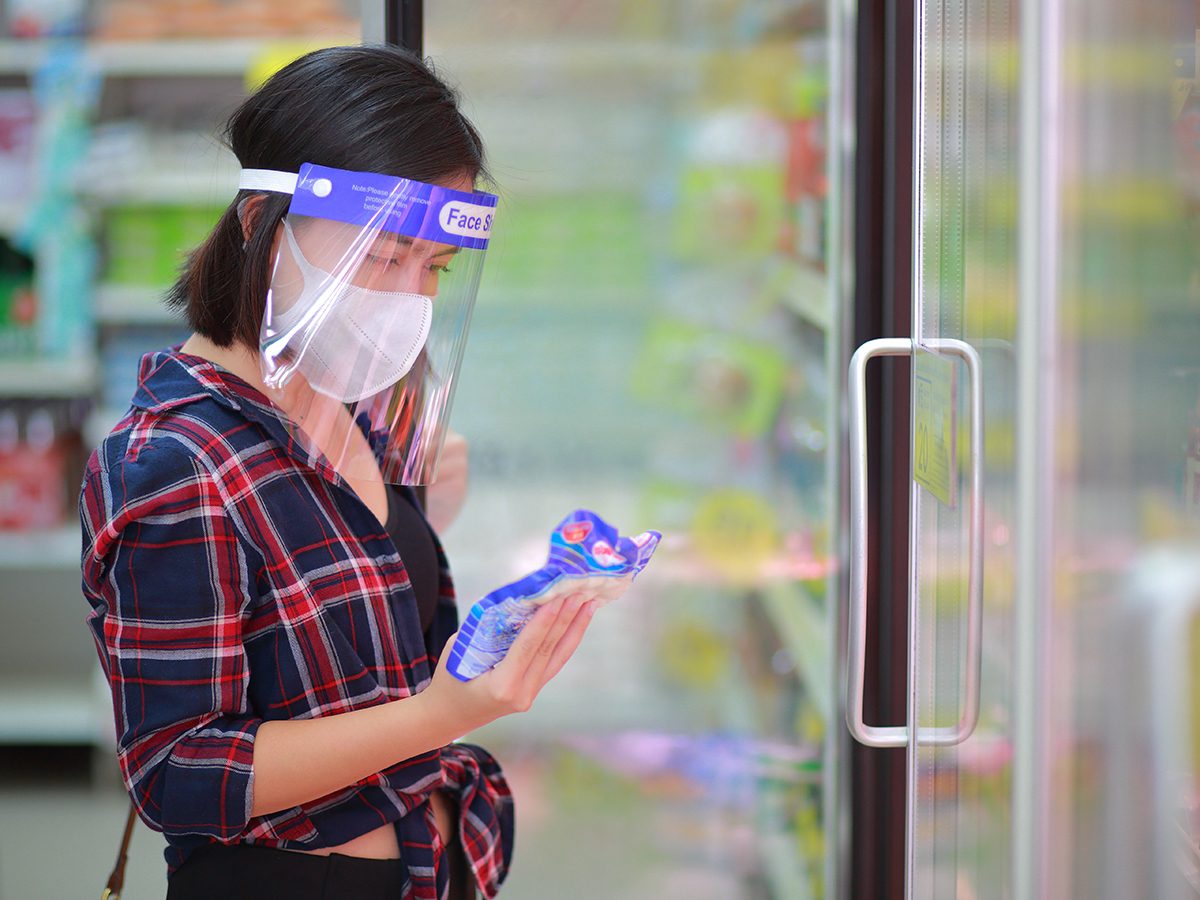
Wearing face shields with masks
Emerging research suggests that if you wear a face shield in addition to a mask, you might be better protected than if you wear only a mask. In a JAMA study published in August 2020, researchers found that cases among COVID-19 health care workers dropped when they began wearing face shields in addition to masks and other PPE (personal protective equipment).
“While not examining face shields alone without masks—ie, face shields as a replacement for masks—there was a clear reduction in positive SARS-CoV-2 cases when face shields were added to masks, gloves and hand hygiene,” Dr. Chang says. “The reason for the reduction is not clear. The takeaway, however, is that a face shield in addition to a mask seems to be more effective.”
In general, “systematic reviews for health care workers do demonstrate that hand hygiene coupled with the complete set of PPE, with masks, gowns, and eye protection are the most effective at preventing infections spreading from patient to provider,” Dr. Chang says. “In the hospitals, when we see patients that are known to be COVID-19 positive or waiting for a COVID-19 test result, we are wearing eye protection.” (These are the nine things doctors need you to know about face masks.)
COVID-19 and your eyes
This is another aspect of COVID-19 transmission that’s likely but doesn’t have a lot of clear-cut scientific research yet. “With SARS-CoV-2, there is not a lot of data about exactly what percentage of infection happens from the eyes versus nose and mouth,” Dr. Chang says.
Plus, “it’s not clear exactly how many COVID-19 cases are due to spread via the eyes only, in patients that were actually wearing a face mask.”
Still, “contaminated fingers that then rub or touch the eyes can be a source of infection for other respiratory viruses, and likely for SARS-CoV-2 as well,” he says. Some viruses, such as adenoviruses (pink eye) are really good at getting in through the eyes, he says; but most respiratory viruses also get in through “mucosal surfaces” that include the eyes in addition to the nose, mouth and throat. (Is it allergies or pink eye? Here’s how to tell the difference.)
Interestingly, a September 2020 study published in JAMA Ophthalmology shows that daily eyeglass wearers made up a smaller percentage of COVID-19 cases than would be expected given the estimated number of those who wear glasses. (This is how to keep your glasses from fogging up while wearing a mask.)
But “it’s not really a study that you can draw definite conclusions from though, since it’s just an observation of the percentage of COVID-19 infected patients that were reported to be daily eyeglass wearers against historical estimates of eyeglass wearers,” Dr. Chang says. And the study only showed a link, not cause and effect.
Eye protection and face masks
Right now, eye protection isn’t universally recommended by the CDC (only for health care workers), but Anthony Fauci, MD, physician, immunologist, and director of the National Institute of Allergy and Infectious Diseases, has recommended using it if you can.
“You have mucosa in the nose, mucosa in the mouth, but you also have mucosa in the eye,” Dr. Fauci said in an Instagram Live conversation on ABC News. “Theoretically, you should protect all the mucosal surfaces. So if you have goggles or an eye shield you should use it.”
Dr. Chang agrees: “Yes, I do think that eye protection would add protective benefit for an individual with respect to COVID-19.” Particularly, “I think for high-risk individuals it may make sense to wear eye protection in addition to a face mask, especially if they are going to be in a high-risk situation—indoors, without good air circulation, for a period longer than 15 minutes.” (Here are nine tips for using a public washroom during COVID-19.)
Ideally, if you’re at high risk for coronavirus, should try to avoid a high risk situation anyway, he says, but if you can’t, he recommends adding eye protection.
Goggles versus face shields
“This is a good question, still without a lot of data comparing goggles to face shields head to head,” Dr. Chang says. “Historically, for other respiratory viruses such as respiratory syncytial virus (RSV), the addition of goggles to face masks and gowns reduced transmission in health care workers.”
Although whether regular people should wear goggles instead of face shields in addition to masks is unproven, it might make sense. (These are the 10 ways doctors protect themselves from COVID-19.)
“Logically, goggles provide a better seal and are probably better at preventing a person from accidentally touching their eyes,” Dr. Chang says. However, goggles aren’t always practical or tolerable for every situation, he says.
The takeaway
Whether you’re including eyewear or not, you need to use your protection correctly; and you shouldn’t slack off on the other measures for avoiding COVID-19.
“The effectiveness of masks and shields depends a lot on proper use,” Dr. Chang says. And he points out that “hand hygiene is still pretty critical to all this working.” (Here are the seven body parts you’re washing all wrong.)
Just as you shouldn’t fiddle with your mask or wear it wrong (below the nose), you shouldn’t reach up under a face shield to touch your face.
The bottom line on face shields: “At this time, I wouldn’t suggest a face shield as an alternative to a face mask except in specific circumstances where a mask wasn’t available or absolutely intolerable,” Dr. Chang says. “Ultimately, eye protection, whether that is in the form of a face shield or goggles, likely has benefit in addition to physical distancing, masks, hygiene, and, importantly, staying home when symptomatic.”
Next, these are the 13 shortages we’re likely to see this winter because of COVID-19.
What Is the Average House Temperature in Winter?
For most people, figuring out the optimal indoor temperature in winter is a balancing act between comfort and keeping heating bills as low as possible. Everyone has their own preference for what is a reasonable temperature for a house in winter, but the consensus from most sources is 20° C.
Thermostat Setting for Day and Night
Does that mean you should set the thermostat at 20° C in the fall and leave it there until spring? There are differing viewpoints on this. For some people, 20° C. is too hot for sleeping, so they drop it a few degrees at bedtime. Some say, however, that doing this wastes energy, as it takes less energy to keep a house at a steady temperature than it does to reheat your home after letting it cool to say, 16° C. This depends on other factors, such as insulation, windows and doors. (This is the scientific reason why you always sleep under blankets, even when it’s hot.)
Daytime Winter Thermostat Setting
Since constantly adjusting the thermostat uses more energy than picking a temperature and sticking with it, the best temperature is wherever you feel most comfortable. This might be 20° C, or it might be a little warmer or colder.
Nighttime Winter Thermostat Setting
A well-insulated home holds heat longer and loses it slower, making the reheating period much quicker. In that case, I think dropping the temperature at night makes sense. A poorly insulated home with old, drafty doors and windows might be a different story. It’s super easy, with modern thermostats to program different temperatures for different times of the day. (Discover the five heating myths you really need to stop believing.)
Factors for Home Heating
If you go with the method of cooling at night and when you’re at work, also consider your floors. Do you have hardwood or tile? If so, it’ll take longer to warm up the floor than it takes to warm up the air. But that’s easily remedied with a warm pair of slippers.
So, the answer to the question “what is a reasonable temperature for a house in winter?” isn’t black and white. Whatever temperature setting you find is comfortable for you and keeps the heating bill reasonable is your answer. But remember, unless you live alone, you’ll likely have to come to a compromise; some household members might just need to bundle up a bit in the chilly months. Agree on how to set the thermostat, then dress accordingly.
Thermostat Options
- Wi-Fi thermostat connects to your home’s wireless internet service and lets you remotely check and change the temperature in your home from an app on your smartphone or tablet.
- Smart thermostats have some features in common with Wi-Fi thermostats. Both styles connect to the internet to be controlled remotely, but smart thermostats can also self-adjust based on a programmed schedule or the daily weather. Some even come with motion sensors to heat the rooms you use most.
- Programmable thermostats may be controlled remotely or centrally depending on the model. Some require you to program the settings right at the wall thermostat. Others will connect to an app.
- Traditional thermostats offer fewer special features, but they are the lest expensive option. If you don’t need to adjust the temperature remotely or to set up personalized heating and cooling schedules, a traditional thermostat should work just fine.
Next, this is why you should drill holes in your garbage can.
Earlier this year, Chetna Bhatt, a 55-year-old information manager in London, Ontario, received a diagnosis of triple-negative breast cancer—a rare form of the disease that doesn’t respond to typical treatment. She had plenty of questions and even more fears. When she visited her family doctor, she found him to be less than helpful, even dismissive. An acquaintance suggested she contact Annette Richard, a local GP with a national reputation for helping women with breast cancer prepare for one of the most trying ordeals of their lives.
Richard, who is 59 years old, traces her start as a breast-cancer guru to the moment she learned, while training in palliative care, that a typical mastectomy is a day procedure. The thought chilled her—similarly invasive surgeries, including for prostate cancer, require significantly longer stays. “A woman would come in after breakfast and go home for lunch without a breast,” she says. “It just seemed wrong to me.”
So Richard did something few doctors bother to do: she asked women how they felt about it. In addition to interviewing patients, she scrubbed into mastectomy surgeries, reviewed abnormal findings and sat in on callbacks after mammography tests. Her discoveries were discouraging. Of all cancers, breast cancer is the most common one among women. In 2019 alone, an estimated 26,900 Canadian women were diagnosed. Richard was struck at how inadequate the system was when it came to supporting women through this all-too common disease.
While she may not have been able to change the hospital turnaround time for mastectomies, Richard could at least better prepare women for surgery and how their bodies would heal and change. She founded FACE IT (the acronym stands for focused anxiety-reducing community-based empowering individual teaching), and started making house calls with a rigged-up CPR model. Using skin-like material to mimic an after-mastectomy torso, Richard carefully walked women and their partners through the procedure.
Today, Richard relies on an anatomy app that doctors and medical students typically use for things like bone mapping and surgical planning. The app allows her to provide breast-cancer patients with a 3D structure of the mastectomy site. Women can review the details whenever they want and, importantly, adjust to the idea of their new body, mitigating the “reveal” on their own time. “My mission,” Richard says, “is coming up with ways to put power and knowledge in the patient’s hands.”
In the months after Bhatt reached out, Richard gave her advice and support on matters big (a home visit during the height of COVID-19 to help Bhatt administer a post-radiation injection) and small (recommending an affordable numbing cream for the painful biopsy procedure). Bhatt has since met many other breast-cancer patients, including several who received chemotherapy alongside her. The difference in care wasn’t lost on her. “She’s been there, literally holding my hand, through everything,” Bhatt says. “There should be more women like Dr. Richard helping women through this scary journey.”
Richard has now coached and cared for hundreds of women. What would make her happiest is if her approach became the norm. In her view, all women deserve holistic, interconnected care, whether it’s prepping for surgery, taking extra time for radiation treatments, or helping them decide on nipple reconstruction. It’s something any doctor can do; all it takes is a new mindset. “Because really,” she says, “cancer and bad care can both seriously wreck somebody’s life.”
Next, find out five ways to reduce your risk for breast cancer.
Face masks and learning to read facial expressions
One of the best ways to slow the spread of COVID-19 is to wear a face mask. Several cities in Canada and across the world have mandated the use of face coverings in public places when social distancing can’t be maintained. This often includes grocery stores, pharmacies, schools, workplaces and houses of worship. As the pandemic continues, the use of face masks for day-to-day activities grows, and with it comes a new challenge: how to read faces.
Face masks have long presented challenges for doctors when communicating with patients. That’s because a significant portion of interpersonal communication happens with visual cues, from body language to how you move the muscles of your face, including your lips, nostrils, and cheeks. These areas are all obscured by face masks, making it hard to read a person’s facial expression.
How face masks affect the hearing impaired
For the hearing impaired, reading lips can be crucial to communication. That’s why Samuel Atcherson, a professor from the University of Arkansas at Little Rock department of audiology and speech pathology, worked to develop a face mask with a clear panel to enable lip reading.
In research published in Audiology Today, Atcherson and his colleagues found clear face masks and shields helped people see the mouth and lips, but they made more muffled sounds compared to other masks. For example, a surgical mask can muffle sound by five decibels, while a transparent mask can muffle sound between 12 to 13.3 decibels. (Here’s what doctors need you to know about face masks.)
Meanwhile, a homemade mask made of transparent cloth can muffle sound by 21.1 decibels. Transparent face masks are only a temporary fix to a bigger problem, especially for the hearing impaired.
But it’s not just those with hearing impairments who are finding it challenging to communicate in the age of mask-wearing. People tend to heavily rely on lip reading when communicating in person (even if that process is largely unconscious).
What society is left with, however—i.e., communicating via the eyes—is quite workable, according to Patti Wood, a body language and nonverbal communication expert and author of seven books on communication including, SNAP: Making the Most of First Impressions, Body Language, and Charisma.
The eyes don’t lie
“Our eyes have evolved to respond involuntarily to what we see and perceive,” says Wood. For example, when you see something that frightens or threatens you, your eyes naturally widen in order to expand your field of vision and increase the amount of light you’re able to absorb in the moment. Conversely, your eyes narrow to a squint when you focus on something that displeases you. (These are the eight secrets your body language reveals about you.)
A true smile can be seen in the corners of the eyes, with subtle lines that appear as a result of your cheeks drawing upward. Sadness causes your eyes to droop, your eyebrows to knit together, and your eyes to appear inexplicably “blank.”
All of these involuntary responses to your own emotions are difficult, if not impossible, to fake, which is why Wood regards the eyes as windows to your emotional state. It’s also why Wood believes communicating via “eye language” is already second nature for humans.
Any struggle you may feel when attempting to read eyes now may be less about your innate ability to communicate this way and more about your awareness of the absence of the mouth and nose as clues.
That means that over time, as you become more accustomed to communicating with people wearing face masks, you will likely find yourself relying more, and more comfortably, on “eye language.”
In the meantime, here’s how to navigate “eye language” to improve your reading of facial expressions.
Eye contact
Maintaining eye contact is more important than ever, says Wood. “You want to give and get good eye extended eye contact,” she says, because research shows sustained eye contact increases feelings of understanding and empathy, both the feelings you feel towards others, and the feelings they’re inspired to feel toward you. (Here’s how to stop your glasses from fogging up while wearing a mask.)
What may not come as second nature, Wood notes, is that people with higher self-esteem tend to be better at maintaining extended eye contact.
That said, it’s possible to work on giving good eye contact, Wood says. By practicing holding eye contact when you’re speaking with someone, you unconsciously increase your connection and ability to feel empathy for them.
Those lying eyes
Have you ever tried to have a meaningful conversation with someone who keeps closing their eyes as they talk? It can be disconcerting. As Wood explains, eye-closing is a “tell” that the other person is lying. Physiologically, as you lie, you’re also struggling to continue to look into the other person’s eyes. Sometimes the eyes gaze downward, which could mean some other things (discussed later). More often, however, your eyes close or blink very slowly. (This is how to spot the six sure-fire signs that someone is lying.)
That downward gaze
Gazing downward can mean several different things, according to Wood. It can mean someone is lying. But it can also indicate someone is experiencing a deep emotion, particularly if the person is gazing downward in the direction of their dominant side.
Since deciphering this requires knowing whether the person is right- or left-handed, it’s best not to rely on the downward gaze, alone, as a sign of deep emotion. This is especially true when the downward gaze can also indicate deception, as well as submission, intimidation and shame.
So, that downward gaze is definitely telling you something. What it is can be revealed in other clues, including the person’s actual words and other clues. (Here are nine body language tricks to instantly get what you want.)
Happy versus sad
As noted above, happy eyes have a distinctive appearance. They crinkle at the outside corners as a result of your cheeks pushing them upward. Sad eyes droop, and the eyes themselves seek less interpersonal engagement, giving them a dull or “blank” appearance.
Surprise
You don’t need to see another person’s mouth wide open to know they’re surprised, says Wood. “You really don’t need anything except the eyes, which widen, and the brows, which raise up.”
Anger
You won’t see someone’s nostrils flaring or lips flattening into a hard line when they’re wearing a mask properly, but you will see their eye muscles tense up and their eyebrows draw downward. Moreover, their eyes themselves may stare hard at the source of anger, the pupils motionless the glare unmistakable. (Avoid these questions that polite people never ask.)
Disgust
As noted above, when someone’s eyes narrow to a squint as they focus intently on something, it’s a reliable sign of disgust. In addition, the eyebrows lower and the brow, as a whole, appears tense. Also, someone who is disgusted may wrinkle their nose, which a mask wouldn’t hide. You too may find yourself squinting, to some extent, as your brain struggles to protect you by limiting your ability to see this person.
Anxiety
Anxiety typically causes the eyes to blink frequently. You may feel your own eyes fluttering if you’re talking to someone in a mask whose eyes are blinking. (Don’t miss these seven signs of high-functioning anxiety.)
Attraction
If you’re meeting someone for the first time while wearing a mask, there’s a lot that their eyes can tell you. One is what their intentions are. While a man may flash his eyebrows when he’s attracted to someone, it also suggests kind intentions. The raised brow, according to Wood, is like saying, “I come in friendship. I want you to feel comfortable with me.”
Conversely, if his eyes are squinted into a narrow focus, it could be he is unconsciously communicating aggression. And in this context, that could mean he is interested in nothing more than a physical connection.
Sources:
- Centers for Disease Control and Prevention: “Absence of Apparent Transmission of COVID-19 With Masks”
- Centers for Disease Control and Prevention: “Absence of Apparent Transmission of SARS-CoV-2 from Two Stylists After Exposure at a Hair Salon with a Universal Face Covering Policy — Springfield, Missouri, May 2020”
- All About the Human Ear: “Lip-reading for non-hearing impaired individuals”
Next, this is what you need to know about COVID-19 in Canada, according to a germ expert.
